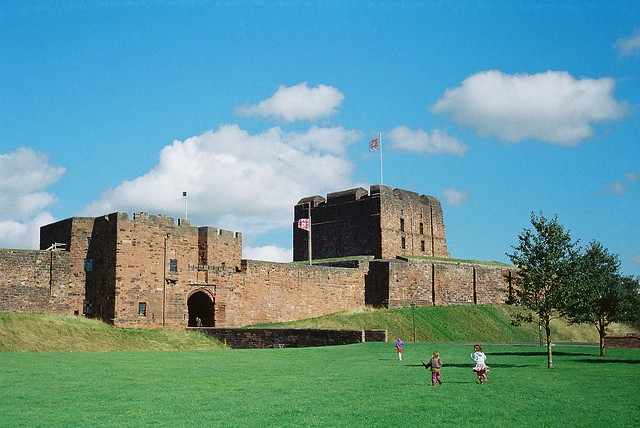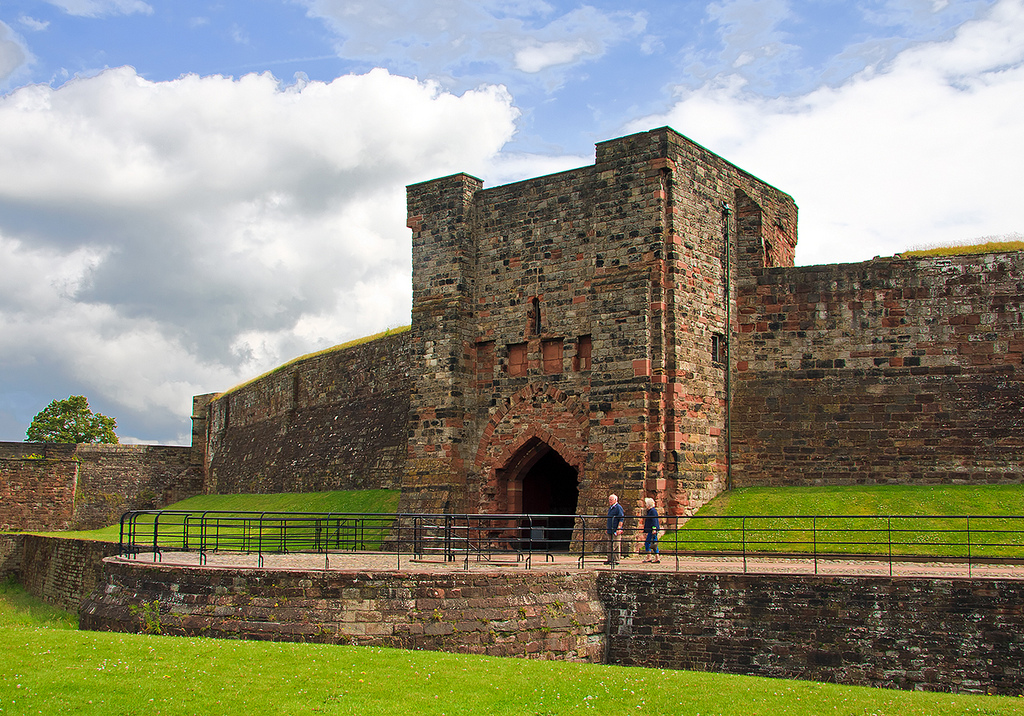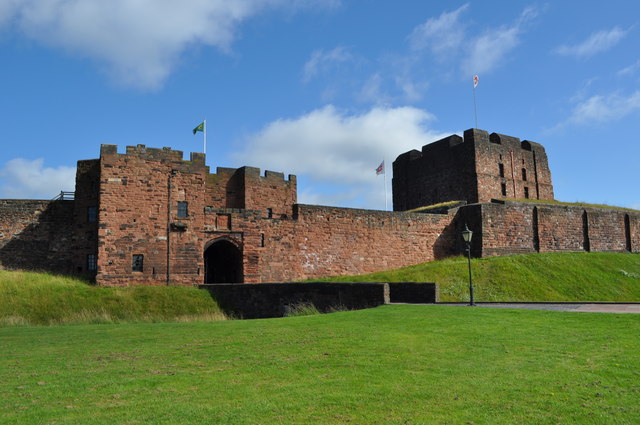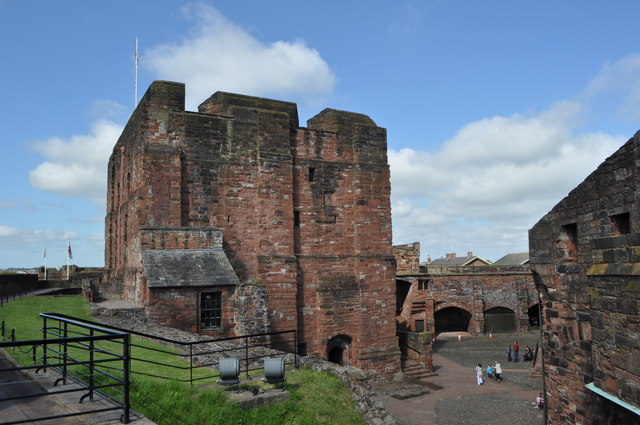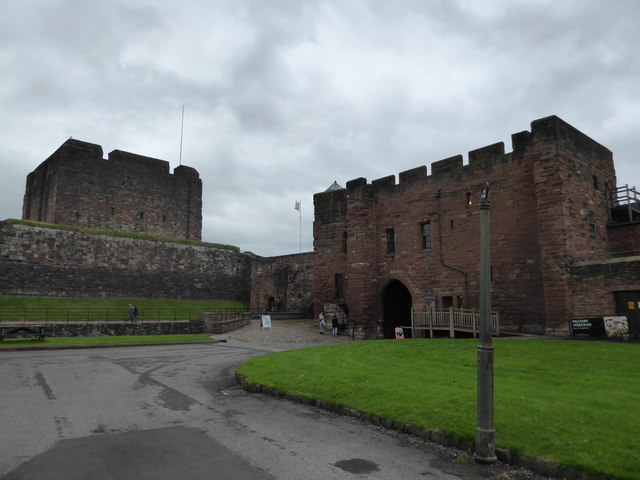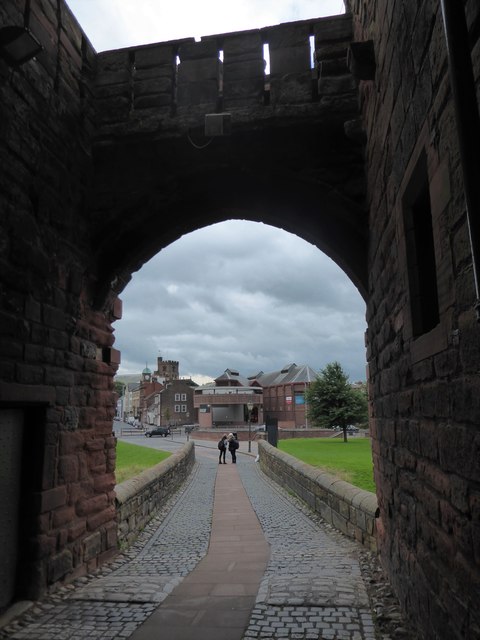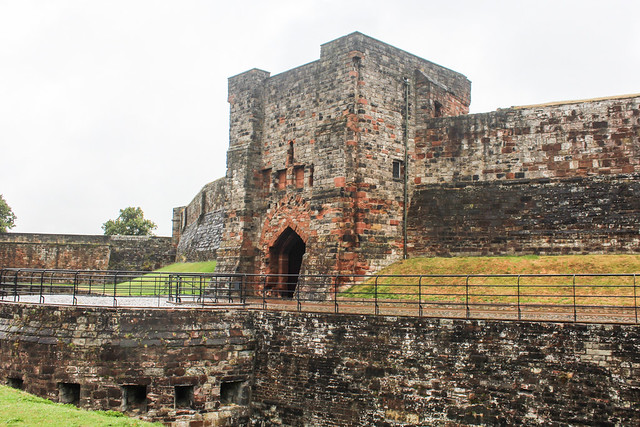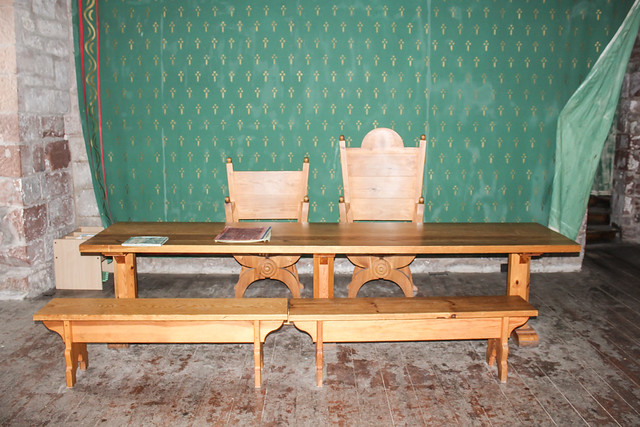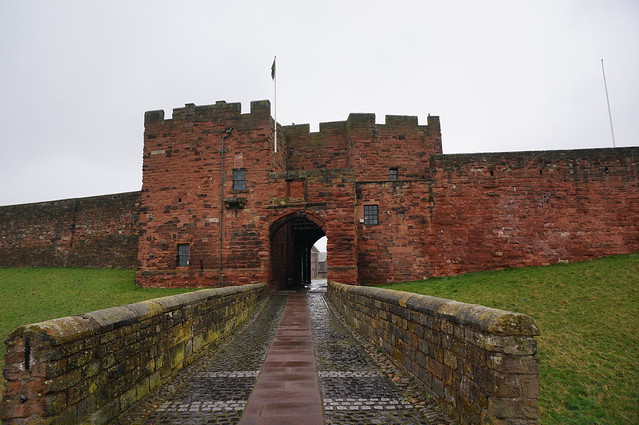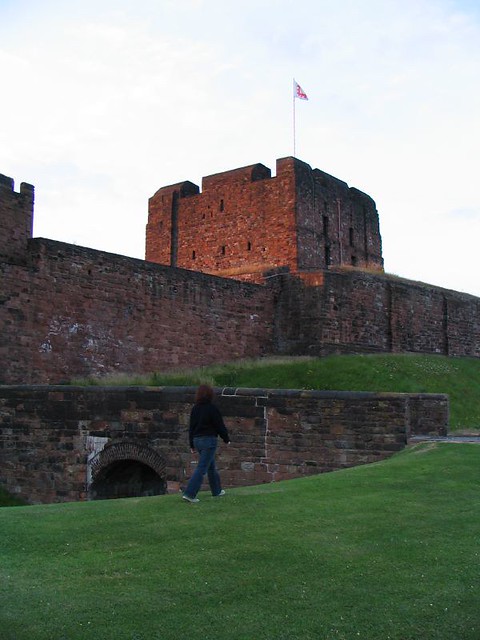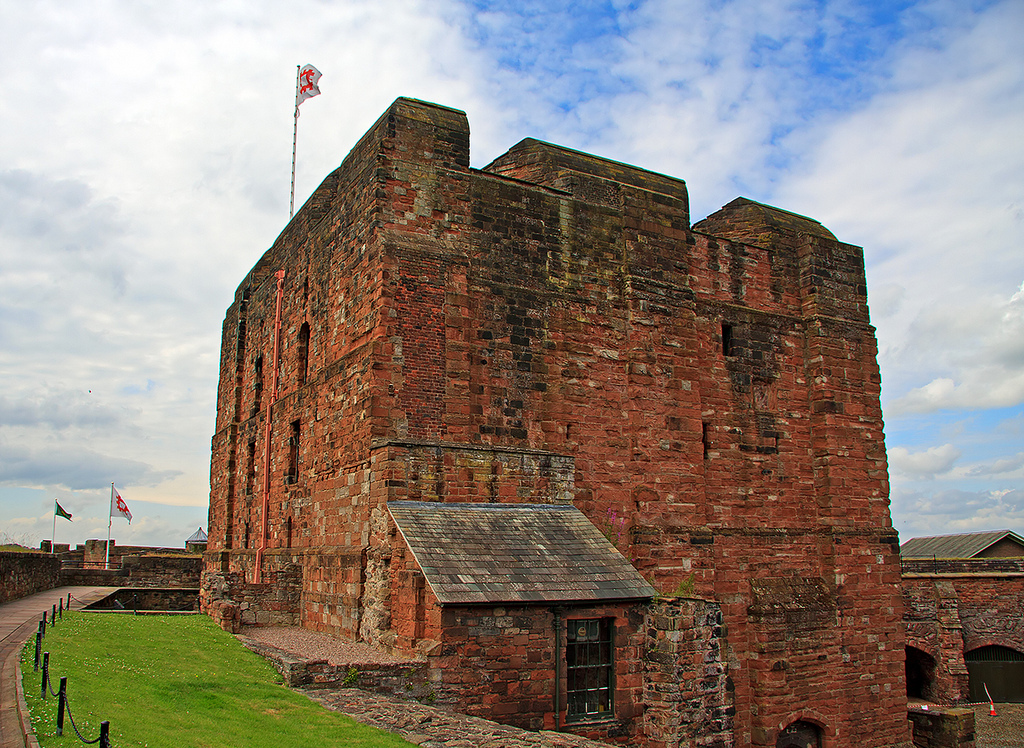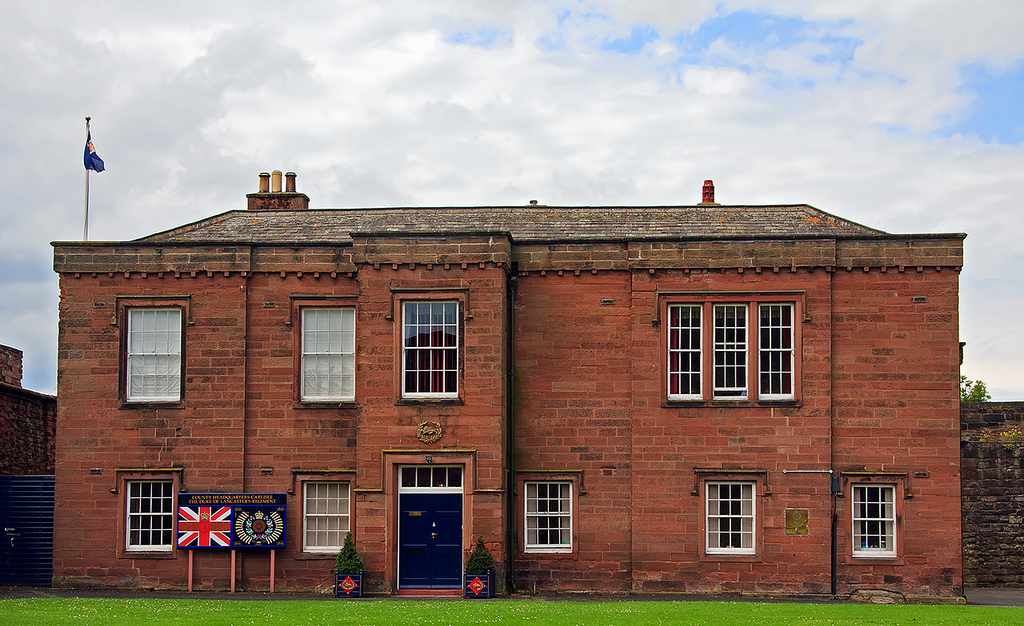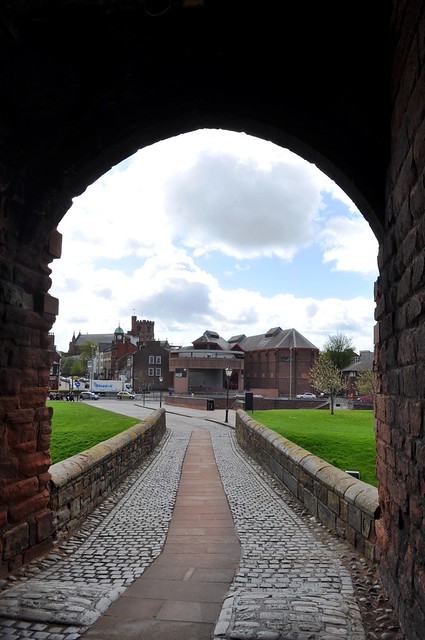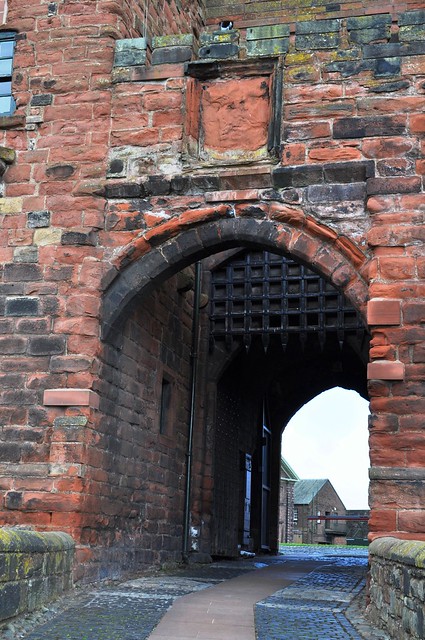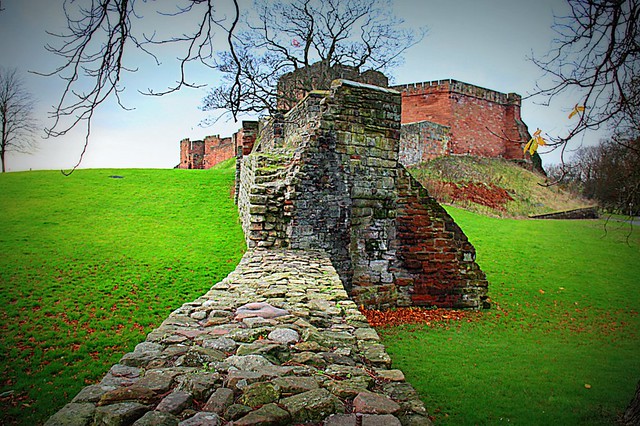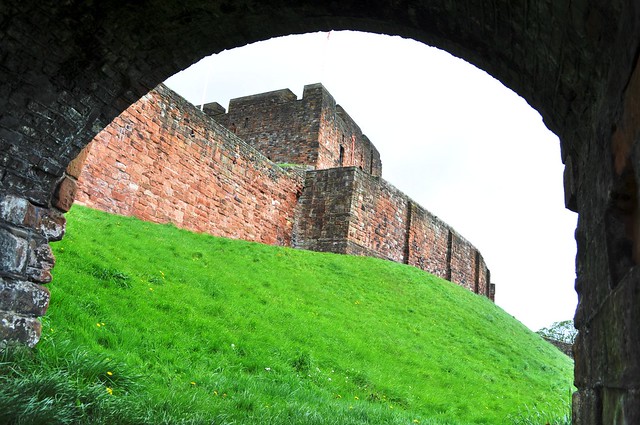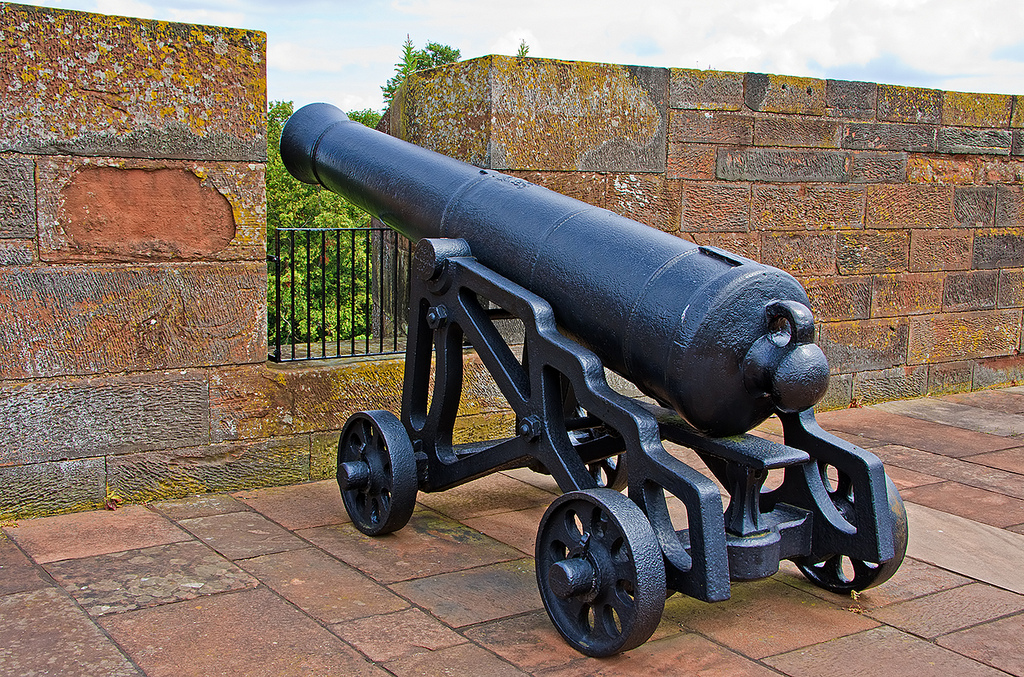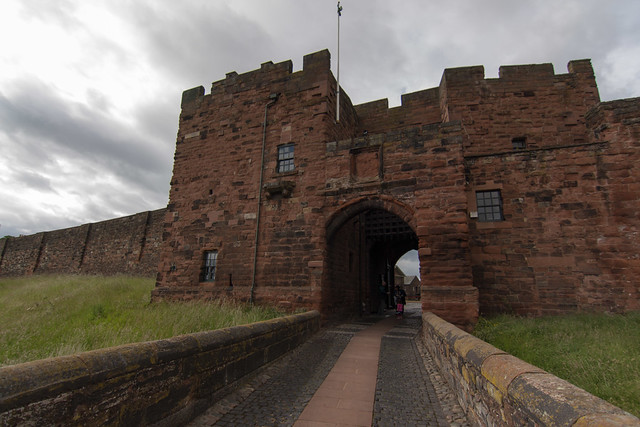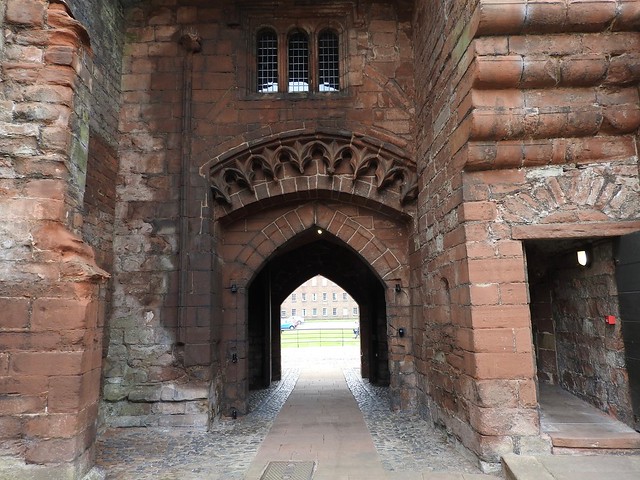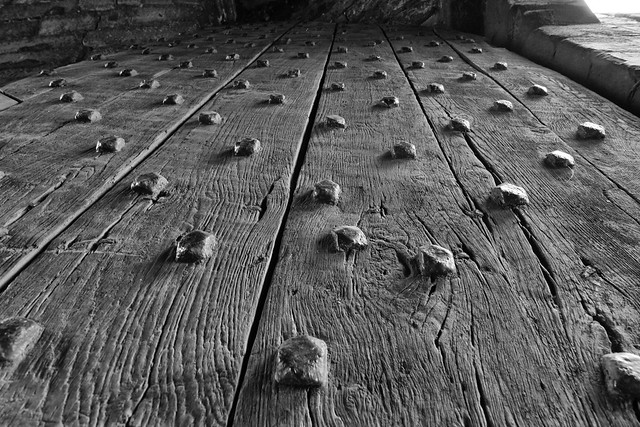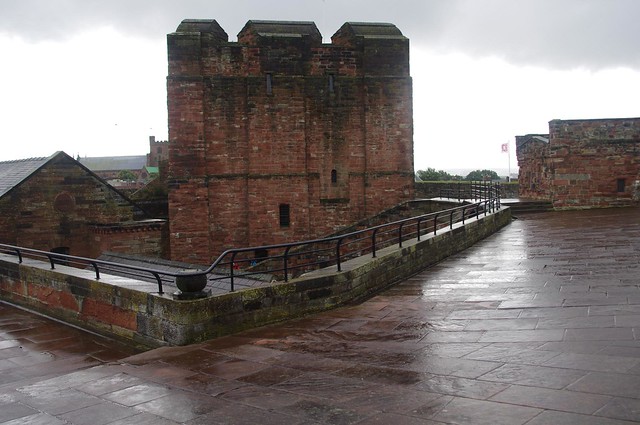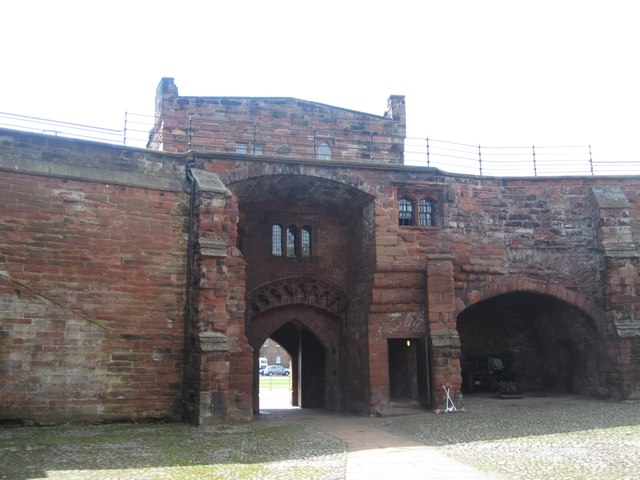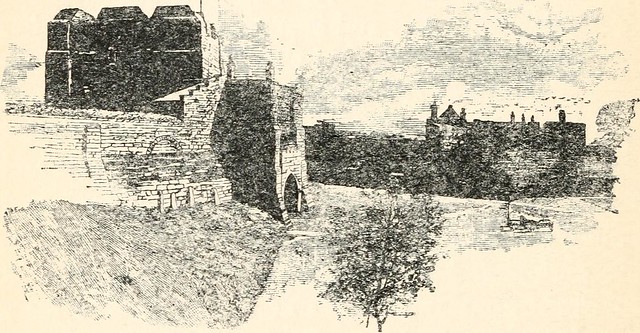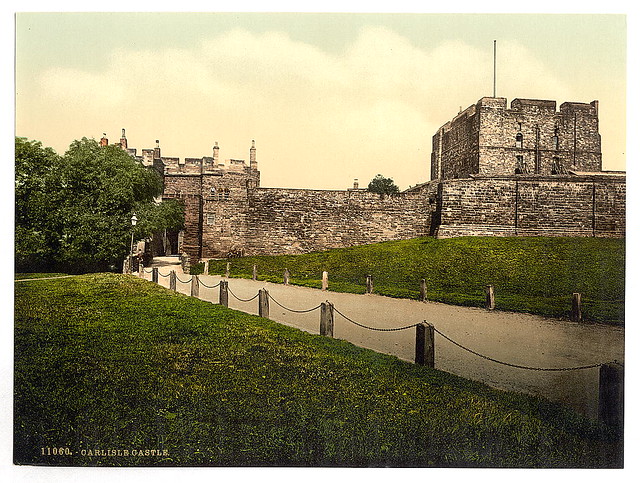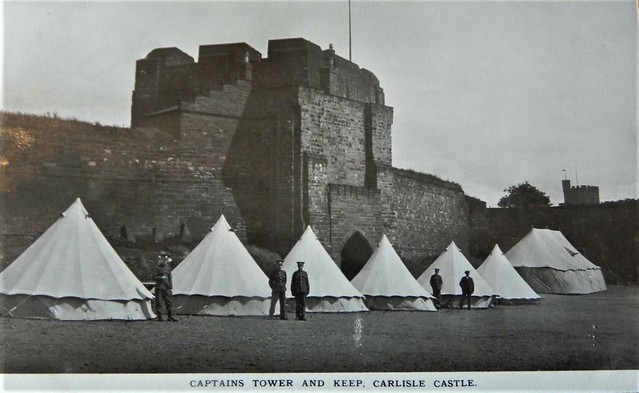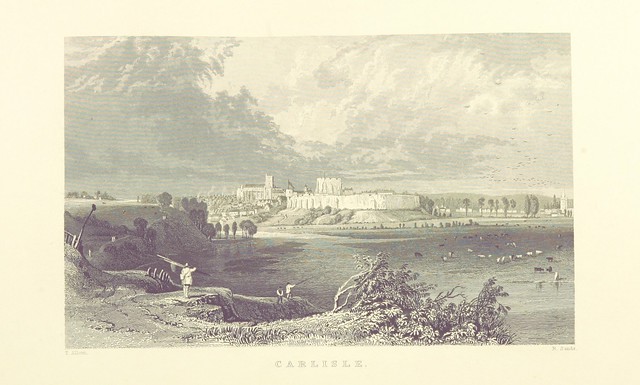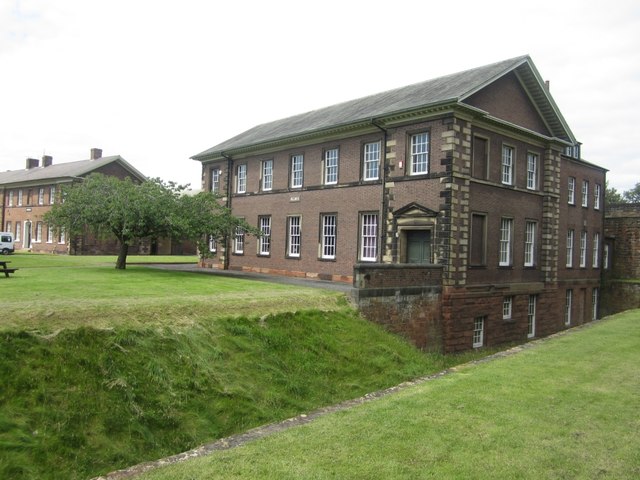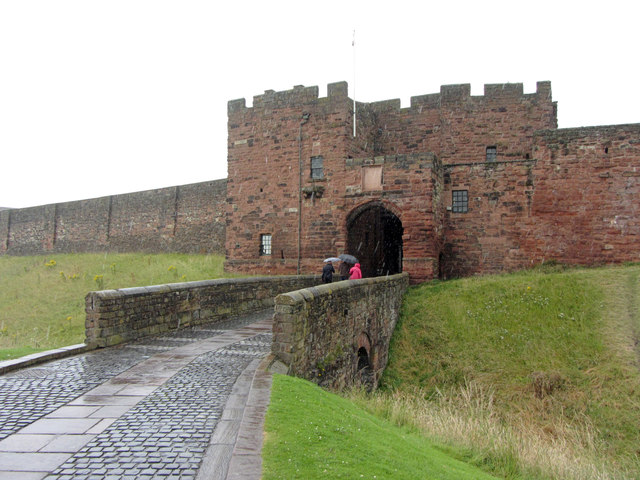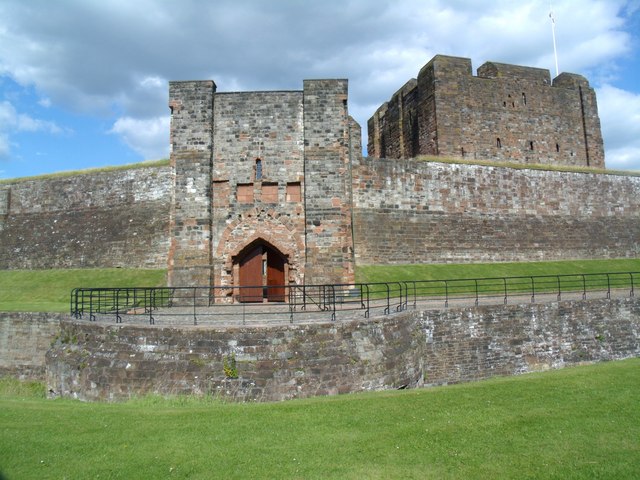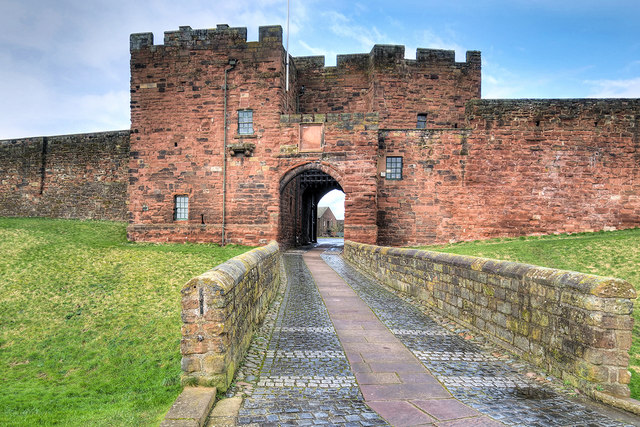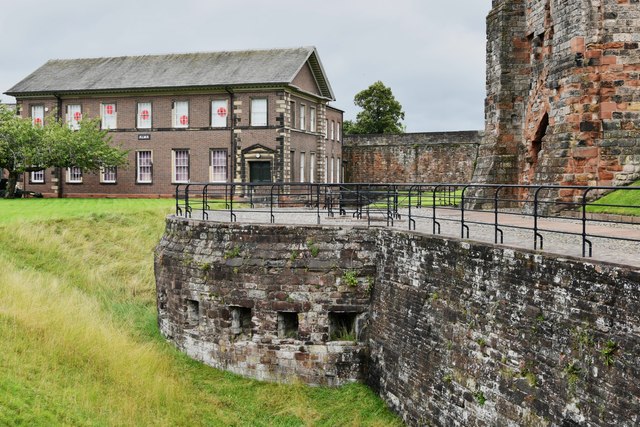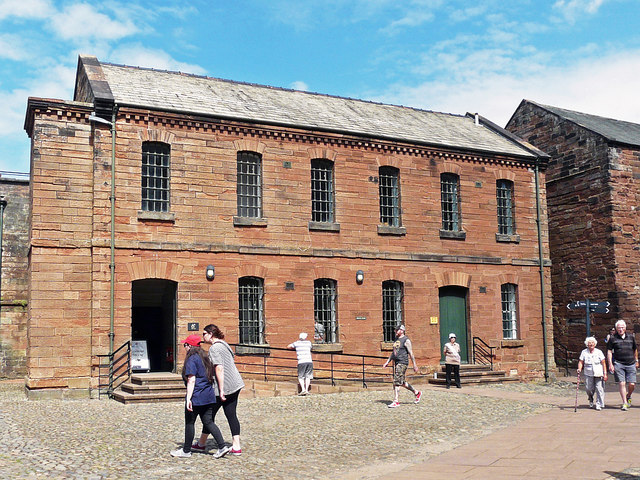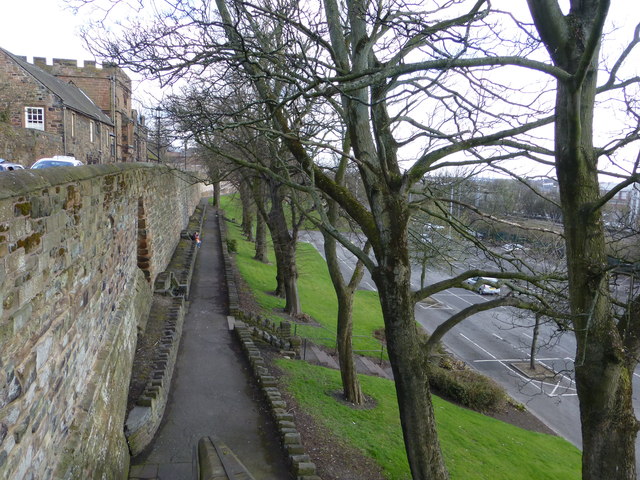Topics > Carlisle > Carlisle Castle
Carlisle Castle
Carlisle Castle is situated in Carlisle, in the English county of Cumbria, near the ruins of Hadrian's Wall. The castle is over 900 years old and has been the scene of many historical episodes in British history. Given the proximity of Carlisle to the border between England and Scotland, it has been the centre of many wars and invasions. Today the castle is managed by English Heritage and is open to the public. The castle until recently was the administrative headquarters of the former King's Own Royal Border Regiment now county headquarters to the Duke of Lancaster's Regiment and a museum to the regiment is within the castle walls.
History
Carlisle Castle was first built during the reign of William II of England, the son of William the Conqueror who invaded England in 1066. At that time, Cumberland (the original name for north and west Cumbria) was still considered a part of Scotland. William II ordered the construction of a Norman style motte and bailey castle in Carlisle on the site of an old Roman fort, with construction beginning in 1093. The need for a castle in Carlisle was to keep the northern border of England secured against the threat of invasion from Scotland. In 1122, Henry I of England ordered a stone castle to be constructed on the site. Thus a keep and city walls were constructed. The existing Keep dates from somewhere between 1122 and 1135.
The act of driving out the Scots from Cumberland led to many attempts to retake the lands. The result of this was that Carlisle and its castle would change hands many times for the next 700 years. The first attempt began during the troubled reign of Stephen of England.
On 26 March 1296, John 'The Red' Comyn, since the fourth quarter of 1295 Lord of Annandale, led a Scottish host across the Solway to attack Carlisle. The then governor of the castle, one Robert de Brus, deposed Lord of Annandale, successfully withstood the attack, before forcing the raiders to retreat back through Annandale to Sweetheart Abbey.
From the mid-13th century until the Union of the Crowns of England and Scotland in 1603, Carlisle Castle was the vital headquarters of the Western March, a buffer zone to protect the western portion of the Anglo-Scottish border.
Henry VIII converted the castle for artillery, employing the engineer Stefan von Haschenperg. For a few months in 1567, Mary, Queen of Scots was imprisoned within the castle, in the Warden's Tower, which was demolished in 1835. Later, the castle was besieged by the Parliamentary forces for eight months in 1644, during the English Civil War.
The most important battles for the city of Carlisle and its castle were during the Jacobite rising of 1745 against George II of Great Britain. The forces of Prince Charles Edward Stuart travelled south from Scotland into England reaching as far south as Derby. Carlisle and the castle were seized and fortified by the Jacobites. However they were driven north by the forces of William Augustus, Duke of Cumberland, the son of George II. Carlisle was recaptured, and the Jacobites were jailed and executed. That battle marked the end of the castle's fighting life, as defending the border between England and Scotland was not necessary with both countries again one in Great Britain.
After 1746, the castle became somewhat neglected, although some minor repairs were undertaken such as that of the drawbridge in 1783.
Some parts of the castle were then demolished for use as raw materials in the 19th century to create more or less what is visible to the visitor today. The Army moved in to take hold of the castle and in 1873 a system of recruiting areas based on counties was instituted under the Cardwell Reforms and the castle became the depot for the 34th (Cumberland) Regiment of Foot and the 55th (Westmorland) Regiment of Foot. Under the Childers Reforms, the 34th and 55th regiments amalgamated to form the Border Regiment with its depot in the castle in 1881. The castle remained the depot of the Border Regiment until 1959, when the regiment amalgamated with the King's Own Royal Regiment (Lancaster) to form the King's Own Royal Border Regiment. The Army Reserve still use parts of the castle: 8 Platoon C Company 4th Battalion the Duke of Lancaster's Regiment are based within the Burma Block alongside a Multi Cap-Badge detachment of the Army Reserve, including Medics, Engineers, Logisticicians, Intelligence and Infanteers from other Cap Badges.
Museum
The Castle also houses Cumbria's Museum of Military Life.
List of Governors
Governors appointed by:
- Henry II (1154–1189):
- Robert de Vaux, Baron of Gillesland
- John:
- William de Stuteville, Baron of Lyddal
- Henry III (1216–1272):
- Robert de Vaux
- Robert de Veteripont
- William de Dacre
- Thomas de Multon
- John Baliol (later King of Scotland)
- Robert de Brus, 5th Lord of Annandale, -1255 & 1267-
- William III de Forz, 4th Earl of Albemarle
- Eustace de Baliol
- Roger de Leiburne, 1265
- Edward I (1272–1307):
- Robert de Hampton
- Richard de Holebrok
- John de Swinburn
- Gilbert de Curwen of Workington
- William de Boyville
- Robert de Brus, 6th Lord of Annandale, 1295-
- Michael de Harela
- John de Halton, Bishop of Carlisle
- Alexander de Bassenthwaite
- Edward II (1307–1327):
- John de Castre
- Andrew de Harcla, 1st Earl of Carlisle
- Piers Gaveston, 1st Earl of Cornwall
- Ralph FitzWilliam, Baron of Greystoke
- John de Halton, Bishop of Carlisle (2nd time)
- Edward III (1327–1377):
- Ralph Dacre, 1st Baron Dacre
- Anthony Lord Lucy of Cockermouth
- John de Glanton
- John Kirkby, Bishop of Carlisle
- Sir Hugh de Moresby
- Thomas, Lord Lucy
- Roland de Vaux
- Sir Richard de Denton
- Sir Hugh de Lowther
- Richard II (1377–1399):
- Henry Percy, 1st Earl of Northumberland
- Ralph, Lord Neville de Raby, 1385
- John Lord Moss of Hamlake
- John Holland, Earl of Huntington, 1395
- Sir Lewis Clifford
- Henry IV (1399–1415);
- Henry Lord Percy, surnamed Hotspur, Governor and General of the Marches
- Edward IV (1442–1483);
- Richard Duke of Gloucester (later Richard III of England)
- Richard III (1483–1485):
- Sir Richard Salkeld of Corby
- Henry VII (1485–1509);
- Sir Richard Salkeld of Corby
- Henry VIII (1509–1547);
- Thomas Lord Warton
- William Lord Dacre of Gillesland
- Edward VI (1547–1553):
- William Lord Dacre of Gillesland
- Mary I (1553–1558):
- William Lord Dacre of Gillesland
- Elizabeth I (1558–1603):
- Henry Lord Scrope of Bolton, c.1560–1591
- William Lord Dacre of Gillesland
- Charles I (1625–1649):
- Sir Nicholas Byron
- Sir Henry Stradling, c.1644
- Sir John Brown, 1645
- Sir William Douglas
- Sir William Levingston
- Sir Philip Musgrave Bt
- Jeremiah Tolhurst, Deputy Governor 1655–1660
- Colonel Thomas Fitch
Post-Restoration of the monarchy
- Charles II (1660–1685):
- December 1660: Sir Philip Musgrave, 2nd Baronet
- 1678: Charles Howard, 1st Earl of Carlisle
- 1684/5: Sir Christopher Musgrave, 4th Baronet
- James II (1685–1688):
- 1687: Sir Francis Howard of Corby
- December 1688: Sir Christopher Musgrave, 4th Baronet
- William III (1689–1702):
- 1689: Sir John Lowther, 2nd Baronet
- 1690: Jeremiah Bubb
- March 1693: Charles Howard, 3rd Earl of Carlisle
- George II (1727–1760):
- 1739: Lt Gen. John Folliot
- 12 August 1749: Gen. Sir Charles Howard
- 1752: Gen. John Stanwix
- George III (1760–1820):
- July 1763: Henry Vane, 2nd Earl of Darlington
- 22 September 1792: Lt Gen. Montgomery Agnew
- 8 September 1818: Lt Gen. Robert Burne
- George IV (1820–1830):
- 18 June 1825: Maj. Gen. Sir George Adam Wood Kt. CB
- William IV (1830–1837):
- 28 April 1831: Lt Gen. Hon. James Ramsay, son of the Earl of Dalhousie
- Victoria (1837–1901):
The post of Governor of Carlisle was abolished in 1838.
Lieutenant-Governors of Carlisle
- 1724–1749: Sir Charles Howard
- 12 August 1749: Cromwell Ward[9]
- 19 March 1812: John Farquharson
Visit the page: Carlisle Castle for references and further details. You can contribute to this article on Wikipedia.
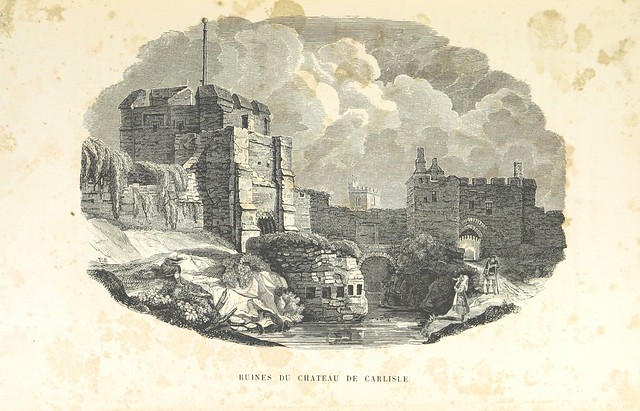
from Flickr (flickr)
Image taken from page 69 of 'Histoire d'Angleterre ... Nouvelle édition, augmentée de plus d'un tiers, et enrichie ... de gravures, etc'
Pinned by Simon Cotterill
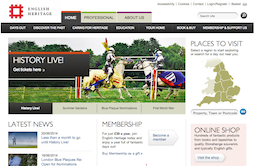
from http://www.english-heritage.o…
CARLISLE CASTLE
- "Standing proud in the city it has dominated for nine centuries, Carlisle Castle remained a working fortress until well within living memory. It has withstood many sieges, held captive a …
Added by
Simon Cotterill

from https://historicengland.org.u…
Carlisle Castle; medieval tower keep castle, two lengths of city wall, a 16th century battery, and part of an earlier Roman fort known as Luguvalium - List Entry
- "....The monument includes the upstanding and buried remains of Carlisle medieval tower keep castle, two lengths of Carlisle city wall, a 16th century battery, and the buried remains of much …
Added by
Simon Cotterill

from Youtube (youtube)
Postcard from Carlisle Castle, Cumbria | England Drone Footage
Pinned by Simon Cotterill
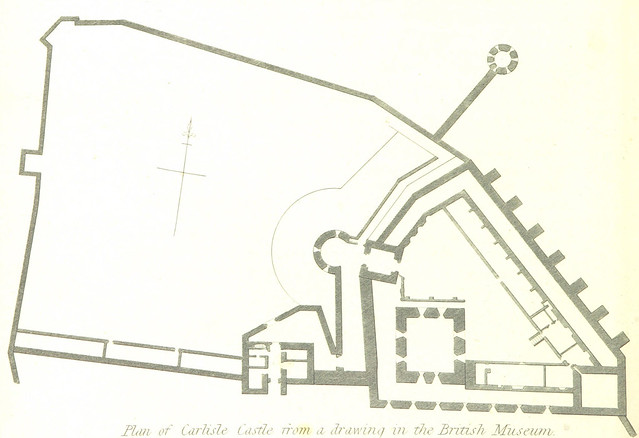
from Flickr (flickr)
Image taken from page 284 of 'Magna Britannia; being a concise topographical account of the several counties of Great Britain. [With copious illustrations.] vol. 1-6. L.P'
Pinned by Simon Cotterill
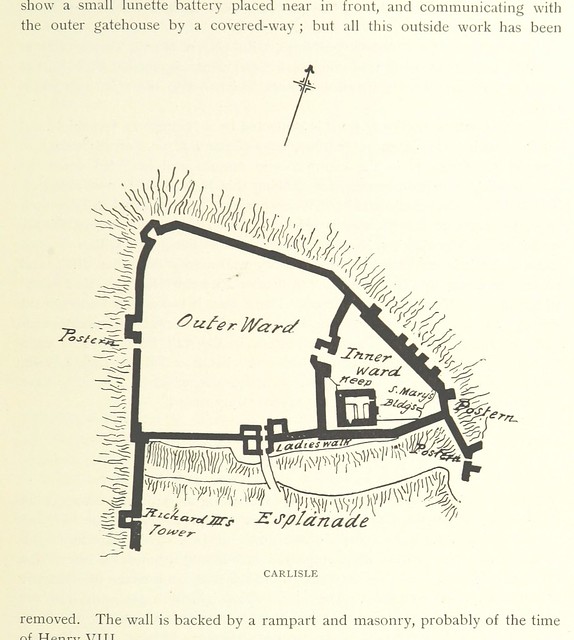
from Flickr (flickr)
Image taken from page 349 of 'The Castles of England: their story and structure ... With ... illustrations and ... plans'
Pinned by Simon Cotterill


from Flickr (flickr)
Image taken from page 69 of 'Histoire d'Angleterre ... Nouvelle édition, augmentée de plus d'un tiers, et enrichie ... de gravures, etc'
Pinned by Simon Cotterill

from http://www.english-heritage.o…
CARLISLE CASTLE
- "Standing proud in the city it has dominated for nine centuries, Carlisle Castle remained a working fortress until well within living memory. It has withstood many sieges, held captive a …
Added by
Simon Cotterill

from https://historicengland.org.u…
Carlisle Castle; medieval tower keep castle, two lengths of city wall, a 16th century battery, and part of an earlier Roman fort known as Luguvalium - List Entry
- "....The monument includes the upstanding and buried remains of Carlisle medieval tower keep castle, two lengths of Carlisle city wall, a 16th century battery, and the buried remains of much …
Added by
Simon Cotterill

from Youtube (youtube)
Postcard from Carlisle Castle, Cumbria | England Drone Footage
Pinned by Simon Cotterill

from Flickr (flickr)
Image taken from page 284 of 'Magna Britannia; being a concise topographical account of the several counties of Great Britain. [With copious illustrations.] vol. 1-6. L.P'
Pinned by Simon Cotterill

from Flickr (flickr)
Image taken from page 349 of 'The Castles of England: their story and structure ... With ... illustrations and ... plans'
Pinned by Simon Cotterill
Post code: CA3 8UR
Wikipedia: Carlisle Castle
Unitary Auth: Cumberland
County: Cumbria
Grid ref: NY3970556224
